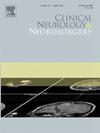缺血性脑卒中后体力活动水平与功能预后之间的遗传关联:孟德尔随机化的启示。
IF 1.8
4区 医学
Q3 CLINICAL NEUROLOGY
引用次数: 0
摘要
目的:日常体力活动(PA)水平与缺血性脑卒中后功能预后之间的遗传关系仍不清楚。本研究旨在利用孟德尔随机法(Mendelian randomization,MR)研究 PA 与缺血性脑卒中后功能预后的遗传关系:我们利用全基因组关联研究(GWASs)进行了双样本 MR 分析。方法:我们利用全基因组关联研究(GWAS)进行了两个样本的 MR 分析,其中包括英国生物库(UK Biobank)中关于轻度体力活动(LPA)和中度至剧烈体力活动(MVPA)的数据,以及缺血性中风功能结果遗传学(GISCOME)中关于缺血性中风后功能结果的数据。反方差加权(IVW)法是我们的主要 MR 分析方法,并辅以几种敏感性分析:在单变量孟德尔随机化(UVMR)分析中,MVPA 与功能预后不良风险的降低显著相关(OR = 0.15,95 % CI = 0.04-0.56,P < 0.01),而 LPA 与遗传无关(OR = 0.37,95 % CI = 0.002-51.40,P = 0.69)。在多变量孟德尔随机化(MVMR)分析中,对包括高血压、2型糖尿病和吸烟在内的潜在混杂特质进行调整后,MVPA与卒中后结局之间的总体模式依然存在(OR = 0.23,95 % CI = 0.07-0.78,P = 0.02):结论:MVPA 是缺血性脑卒中后功能预后的保护因素。结论:MVPA 是缺血性脑卒中后功能预后的保护因素,这一发现对脑卒中患者的康复和功能预后非常重要。本文章由计算机程序翻译,如有差异,请以英文原文为准。
Genetic associations between physical activity levels and functional outcome after ischemic stroke: Insights from Mendelian randomization
Objective
The genetic relationship between daily physical activity (PA) levels and functional outcome after ischemic stroke remains unclear. This study aimed to investigate the genetic associations of PA on functional outcome after ischemic stroke using Mendelian randomization (MR).
Methods
We conducted two-sample MR analyses using genome-wide association studies (GWASs). This included data on light physical activity (LPA) and moderate-to-vigorous physical activity (MVPA) from the UK Biobank, and functional outcome after ischemic stroke from the Genetics of ischemic stroke Functional Outcome (GISCOME). The inverse-variance weighted (IVW) method served as our primary MR analysis approach, supplemented by several sensitivity analyses.
Results
In univariable Mendelian randomization (UVMR) analysis, MVPA was significantly associated with a reduced risk of poor functional outcome (OR = 0.15, 95 % CI = 0.04–0.56, P < 0.01), whereas LPA had no genetic relationship (OR = 0.37, 95 % CI = 0.002–51.40, P = 0.69). In multivariate Mendelian randomization (MVMR) analysis adjusting for potentially confounding traits including hypertension, type 2 diabetes, and smoking, the overall patterns between MVPA and poststroke outcome remained (OR = 0.23, 95 % CI = 0.07–0.78, P = 0.02).
Conclusion
MVPA is a protective factor for functional outcome after ischemic stroke. This finding is important for the rehabilitation and functional outcome of stroke patients.
求助全文
通过发布文献求助,成功后即可免费获取论文全文。
去求助
来源期刊

Clinical Neurology and Neurosurgery
医学-临床神经学
CiteScore
3.70
自引率
5.30%
发文量
358
审稿时长
46 days
期刊介绍:
Clinical Neurology and Neurosurgery is devoted to publishing papers and reports on the clinical aspects of neurology and neurosurgery. It is an international forum for papers of high scientific standard that are of interest to Neurologists and Neurosurgeons world-wide.
 求助内容:
求助内容: 应助结果提醒方式:
应助结果提醒方式:


